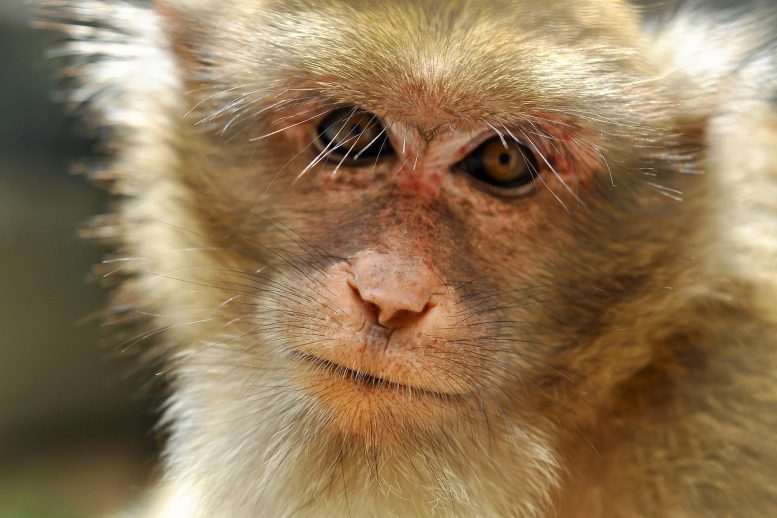
An obscure family of viruses, already endemic in wild African primates and known to cause fatal Ebola-like symptoms in some monkeys, is “poised for spillover” to humans.
Evoking parallels to HIV, authors are calling on global health community to be vigilant.
According to new research, an obscure family of viruses, already endemic in wild African primates and known to cause fatal Ebola-like symptoms in some monkeys, is “poised for spillover” to humans. The study, by the University of Colorado Boulder, was published online in the journal Cell on September 30.
“This animal virus has figured out how to gain access to human cells, multiply itself, and escape some of the important immune mechanisms we would expect to protect us from an animal virus. That’s pretty rare.” — Sara Sawyer
Although such arteriviruses are already considered a critical threat to macaque monkeys, no human infections have been reported thus far. In addition, it is uncertain what impact the virus would have on people should it jump species.
However, the authors, evoking parallels to HIV (the precursor of which originated in African monkeys), are calling for vigilance nevertheless: By watching for arteriviruses now, in both animals and humans, the global health community could potentially avoid another pandemic, they said.
“This animal virus has figured out how to gain access to human cells, multiply itself, and escape some of the important immune mechanisms we would expect to protect us from an animal virus. That’s pretty rare,” said senior author Sara Sawyer. She is a professor of molecular, cellular and developmental biology at CU Boulder. “We should be paying attention to it.”
There are thousands of unique viruses circulating among animals around the globe, and most of them cause no symptoms in the host. Increasing numbers of these viruses have jumped to humans in recent decades, wreaking havoc on naïve immune systems with no experience fighting them off. This includes Middle Eastern Respiratory Syndrome (MERS) in 2012, Severe Acute Respiratory Syndrome coronavirus (SARS-CoV) in 2003, and SARS-CoV-2 (the virus that causes COVID-19) in 2020.

Sara Sawyer. Credit; UC Boulder
For 15 years, Sawyer’s lab has used laboratory techniques and tissue samples from wildlife from around the globe to investigate which animal viruses may be prone to jump to humans.
For the latest study, she and first author Cody Warren, then a postdoctoral fellow at the BioFrontiers Institute at CU, zeroed in on arteriviruses. These are common among pigs and horses but understudied among nonhuman primates. Specifically, they looked at simian hemorrhagic fever virus (SHFV), which causes a lethal disease similar to the Ebola virus disease. Dating back to the 1960s, it has been causing deadly outbreaks in captive macaque colonies.
According to the research, a molecule, or receptor, called CD163, is crucial to the biology of simian arteriviruses, enabling the virus to invade and cause infection of target cells. Through a series of laboratory experiments, the scientists discovered, much to their surprise, that the virus was also remarkably skilled at latching on to the human version of CD163, getting inside human cells, and quickly making copies of itself.
Like human immunodeficiency virus (HIV) and its precursor simian immunodeficiency virus (SIV), simian arteriviruses also appear to attack immune cells. This means they can disable key defense mechanisms and take hold in the body long-term.
“Just because we haven’t diagnosed a human arterivirus infection yet doesn’t mean that no human has been exposed. We haven’t been looking.” — Cody Warren
“The similarities are profound between this virus and the simian viruses that gave rise to the HIV pandemic,” said Warren. He is now an assistant professor in the College of Veterinary Medicine at The Ohio State University.
The authors stress that another pandemic is not imminent, and the public should not be alarmed.
However, they do suggest that the global health community prioritize the further study of simian arteriviruses and develop blood antibody tests for them. They should also consider surveillance of human populations with close contact with animal carriers.
An expansive variety of African monkeys already carry high viral loads of diverse arteriviruses, often without symptoms. Additionally, some species frequently interact with humans and are known to bite and scratch people.
“Just because we haven’t diagnosed a human arterivirus infection yet doesn’t mean that no human has been exposed. We haven’t been looking,” said Warren.
Warren and Sawyer note that in the 1970s, no one had heard of HIV either.
Scientists now know that HIV likely originated from SIVs infecting nonhuman primates in Africa, likely jumping to humans sometime in the early 1900s.
When it began killing young men in the United States in the 1980s, no serology test existed, and no treatments were in the works.
Sawyer said there is no guarantee that these simian arteriviruses will jump to humans. But one thing is for sure: More viruses will jump to humans, and they will cause disease.
“COVID is just the latest in a long string of spillover events from animals to humans, some of which have erupted into global catastrophes,” Sawyer said. “Our hope is that by raising awareness of the viruses that we should be looking out for, we can get ahead of this so that if human infections begin to occur, we’re on it quickly.”
Reference: “Primate hemorrhagic fever-causing arteriviruses are poised for spillover to humans” by Cody J. Warren, Shuiqing Yu, Douglas K. Peters, Arturo Barbachano-Guerrero, Qing Yang, Bridget L. Burris, Gabriella Worwa, I-Chueh Huang, Gregory K. Wilkerson, Tony L. Goldberg, Jens H. Kuhn and Sara L. Sawyer, 30 September 2022, Cell.
DOI: 10.1016/j.cell.2022.09.022



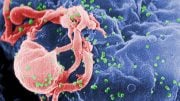
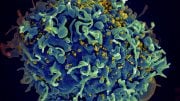
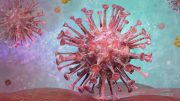


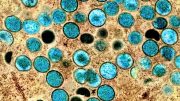
Doctors Bad. MMM k?
Quarantine Africa.
Ok everybody just leave those monkeys alone. Stop touching them.
Monkey meat is smuggled into France to satisfy the cuisinary needs of it’s massive immigrant population. So monkey meat is a normal dietary component in Africa proper and they ain’t buying it prepackaged at the supermarket. It’s a matter of time until the whole world suffers.
COVID-19 is just another spillover from animals to humans…. RIGHT. A “spillover” at a nearby bio-weapons lab, most likely.
That notion isn’t politically correct, however for obtaining cheap labor for electronics and most everything else, so we must pretend it was the meat market and bat soup despite the fact the bat it appears to come from is found 500 miles North of that LOCAL meat market and discovered a decade earlier by people cleaning out guano from the caves. It was contained, but samples were taken to a certain bio-weapon lab near a certain meat market for study….
But hey, why let the facts get in the way of good relations with a country that is just so darn friendly with our form of Western Capitalism? They’re allies of Russia… We’re allies of R…. Oh wait. We’re NOT.
… just don’t bring it to off shore labs… the viruses are known to escape the place where they are contained and experimented upon…